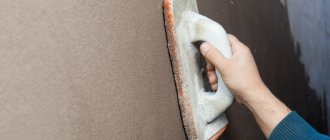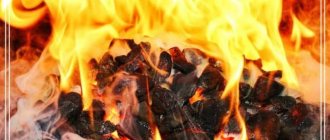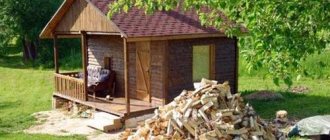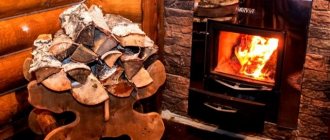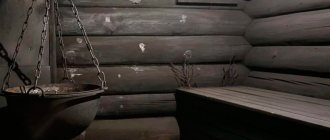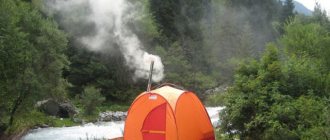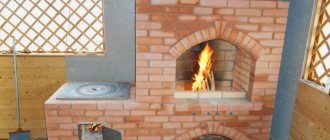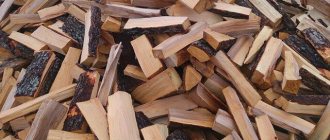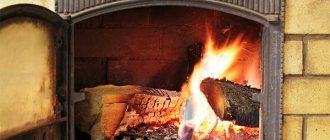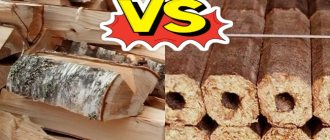For beginners in the art of bathing, any business is a wonder. Many people ask the question of how to properly heat a sauna so that it has long-lasting heat and excellent steam. Let's find out!
The stove in the bathhouse is the main ruler! The entire heating process depends on what kind of stove is built in your bathhouse.
After all, in order to heat the bathhouse, you need to heat the stove correctly, add a new portion of firewood in time, keep an eye on the coals and firebrands, and not miss that important moment when you can close the bathhouse for heat.
Stoves in baths are made of brick and metal. Each of them has its own approach, each is heated differently. The choice of firewood plays an important role, because traditionally the Russian bathhouse is heated only with wood.
The heating time of the stove, its heating, heating of the heater and water depend on good, high-quality firewood. Only high-quality firewood creates this unique bath spirit and aroma in the steam room. How the bathhouse will be heated and what the heat and bathhouse spirit will be depends on the quality and quantity of firewood!
What kind of wood to heat the bathhouse with?
You can heat a sauna with a variety of wood types. We have all sorts of trees, and each of them behaves differently in a sauna stove. In order to heat the stove perfectly, the wood must burn for a long time, produce a lot of heat and little smoke.
Bad, rotten, moldy firewood can simply ruin the entire sauna process. The bathhouse can become completely saturated with unpleasant aromas.
Be reasonable, do not use painted boards and other wooden rubbish for the firebox, I assure you, it will not bring any benefit! Old junk can be toxic and unsafe for you and for the queen of the stove herself!
So, what kind of firewood is suitable for burning...
Oak firewood
Young oak will give a wonderful aroma in the bathhouse and create a unique atmosphere, but there will be no real heat from such firewood. Old oak wood is also not suitable for a stove; it is too decrepit and old, and produces ash rather than heat. The air in the bathhouse will be heavy and don’t expect light steam.
If you choose oak as a sauna fuel, then opt for a middle-aged tree. Firewood must be strong, dry and under no circumstances rotten!
Rotten firewood does not provide heat, it only smokes. But strong oak logs will heat up the bathhouse properly!
Oak is famous for its hard structure, it burns for a long time and produces a lot of heat. Oak firewood is economical; to properly heat a bathhouse, its consumption will be much less than other firewood.
Birch firewood
The most popular fuel in the sauna world is birch firewood! They heat a sauna perfectly, light up easily and burn evenly, their coals retain heat for a long time.
The birch heat from the stove disinfects the air in the bathhouse, making it light and soft. In a bathhouse heated with birch firewood, hot air is inhaled much easier.
Birch firewood has excellent heat transfer, it is almost 30% higher than the amount of thermal energy that pine or aspen provide when burning.
Wood and birch bark are extremely rich in tar, which is nothing more than a carbon compound. It is birch tar that allows you to quickly build a fire and burn logs well.
Birch bark replaces paper for lighting the bulk of firewood in the stove.
Birch fuel has only one drawback - it quickly deteriorates and deteriorates. Rot appears inside the logs; there is no heat from such firewood. The service life of harvested birch firewood is no more than two years.
Alder firewood
Alder firewood is very similar to birch firewood. The spirit of alder firewood in the sauna will make you cheerful and energetic. And popular beliefs say that a sauna heated with alder is an excellent anti-cold remedy.
Alder is a good wood for a sauna stove. Firewood produces almost no smoke, produces a lot of heat and can be stored for quite a long time. When burning, this tree emits beneficial fumes, which perfectly clean the chimney of soot.
Alder firewood dries well and does not require special drying conditions.
Linden firewood
Linden is a special tree and can also be used to heat a sauna stove. It’s just that you’re unlikely to be able to light the wood quickly.
Linden logs light up slowly and difficultly, but then burn well, heating the sauna stove perfectly.
There is no secret that linden is a healer! In ancient times, warriors who were wounded in battles with foreigners treated their wounds in a hot bathhouse heated only with linden wood. After the bath we drank linden honey and quickly recovered.
Linden firewood, like birch firewood, has a limited shelf life (no more than two years). After this period, the firewood quickly deteriorates.
Aspen firewood
Aspen firewood is not the best option for high-quality heating of a bathhouse. There is no excellent heat in aspen! However, aspen has an amazing property. When burning, wood does not produce soot or smoke and emits (like alder) special fumes. It is these fumes that are super-disintegrators of soot in the furnace chimney.
The soot simply falls into the furnace and the furnace vent, where it can be easily cleaned out. Thanks to this amazing ability, aspen wood must be used to fire the stove.
Poplar, Willow, Ash firewood
I combined these three trees into one story of firewood for a bathhouse. The fact is that they are in no way suitable for the queen of a sauna stove. They burn out quickly, do not produce heat and are of low quality.
Willow and ash smoke is very acrid and bitter, if it gets into the steam room - disaster!
Conifers
All coniferous trees are rich in resin, so they burn well, evenly and quickly. Coniferous wood is rich in essential oils; they create this unique forest aroma in the steam room. But in order to heat the bathhouse hotly, you need quite a lot of such firewood.
The downside of pine wood is that when it burns, it produces a lot of smoke, which clogs the chimney. When burning, conifers crackle and sparks fly from them, therefore you need to monitor fire safety in the bathhouse.
Finishing the conversation about firewood for the bathhouse, I would like to add that it is advisable to choose even logs for the stove, without knots. Knots on logs are future firebrands that burn out for so long that all the heat from the bath will fly out of the stove and onto the street!
Fuel selection
When kindling, you can use firewood from different types of wood:
- Thuja, pine, spruce. They are inexpensive and burn out quickly. The main disadvantage of the fuel is the content of resins, which settle on the walls of the chimney and do not burn out.
- Birches. They flare up quickly, burn long and evenly. When burned, they release a pleasant fragrant aroma that fills the bathhouses. It is recommended to use fresh, dried wood.
- Duba. This breed has a high heat transfer rate. Prepared logs can be stored for a long time without loss of quality. Burns for a long time and heats evenly. The disadvantage is the high price.
- Acacias. High thermal conductivity. Provides uniform heating.
- Aspen, poplar, linden. They have low density and burn out quickly. Do not provide strong heat.
- Hornbeam. They have a high thermal conductivity. The flame is smokeless, the burning is long, even, the heat is strong.
A separate type of solid fuel that is gradually gaining popularity is pellets and briquettes. The first are granules that are made from sawdust by pressing. The latter are similar to bricks, made from sawdust of different sizes. The main advantage of these types of fuel is long burning and intense heat.
Preparing the oven
When you decide on the choice of bath fuel, it’s time to prepare the stove itself for the fire dance. Things are not so simple here. In order to light a stove quickly, you need good draft. A fire will not burn without good access to oxygen.
For this reason, it is necessary to thoroughly clean the furnace mouth and vent from combustion products - ash and coals. The grate on which the firewood is stored must be clean and its slots must not be clogged.
When the furnace is prepared, water is filled into the boiler and barrels, the furnace valve is wide open - the most exciting moment comes. You can start heating the oven!
I really love this mysterious process of making fire, when a tiny scarlet flame becomes a greedy red flower. It jumps from log to log, filling the entire mouth of the stove.
Safety precautions
The bathhouse is a high-risk facility. To protect yourself and visitors to the steam room, you must follow certain rules:
- The operation of damaged sauna stoves is prohibited.
- Regular cleaning of the chimney is necessary.
- Ignition can only be done using special compounds. Other chemicals may cause fire or poisoning.
- The combustion chamber door must be closed during combustion.
- Drying firewood close to the stove or on top of bricks is prohibited.
- Bathrooms must have good ventilation.
- A steel sheet should be placed under the ash hole to protect the floor covering from falling coals.
- Do not use rubber or plastic, rags, painted boards or old firewood to light the stove.
After each kindling, it is necessary to clean out the ash and remove soot from surfaces.
How to light a stove
To light the stove you will need: four thin, even logs, birch bark, crumpled newspaper, wood chips, matches. First you need to build a mini-fire in the firebox of the sauna stove; it should not be located deep, above the first cracks of the vent.
To do this, you need to place two logs parallel to the grate, the distance between them should be no more than the palm of your hand. Place crumpled paper or birch bark between the logs and sprinkle a small pile of wood chips on top.
Place the remaining two logs diagonally on top of the resulting structure. The gap between them should not be too small, remember, fire loves air! This peculiar well of logs will become the beginning of the fire dance.
Now take matches and set fire to the paper, wait until it starts to burn, do not immediately close the firebox door, you just need to close it slightly. In a sauna pipe, due to pressure changes, there is often something like an air lock, so the fire does not have enough necessary draft from the pipe and the slightly open door supplies it with the necessary air.
After a few minutes, the bath pipe breaks through with fire and the draft intensifies; you can close the door more tightly and listen carefully to the characteristic humming, crackling sounds of the flame. If they calm down after a while, it means that the process of lighting the stove was unsuccessful and you need to start all over again...
